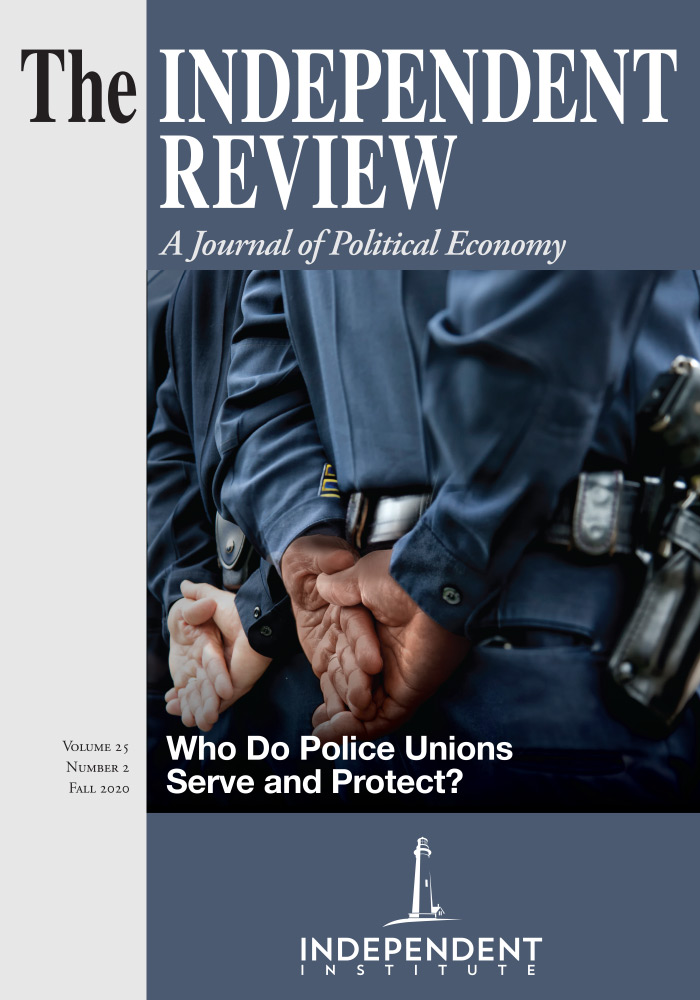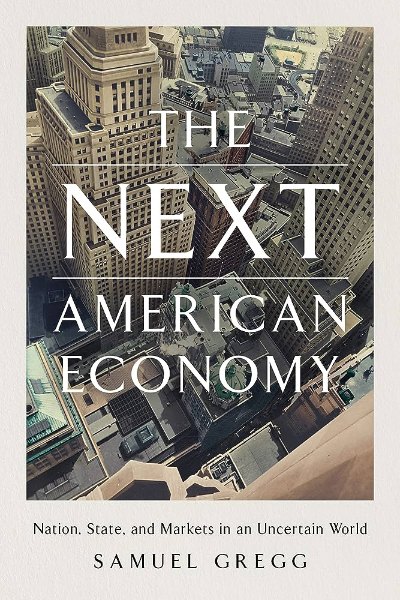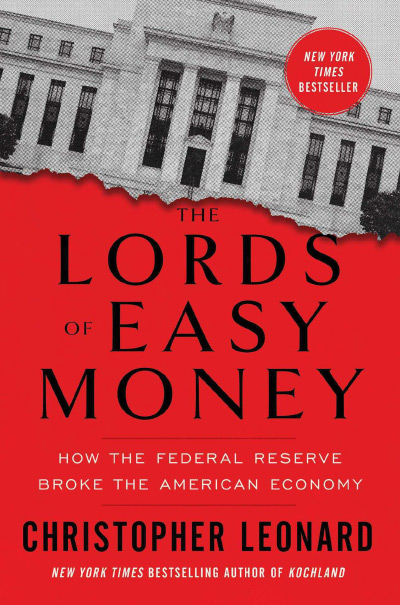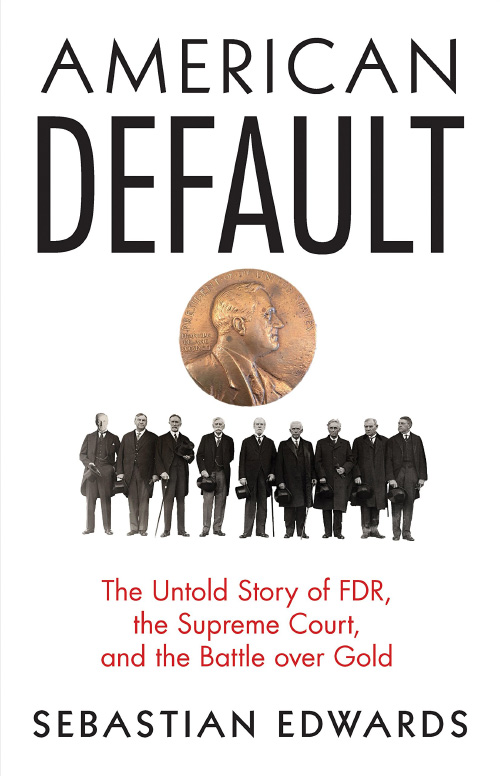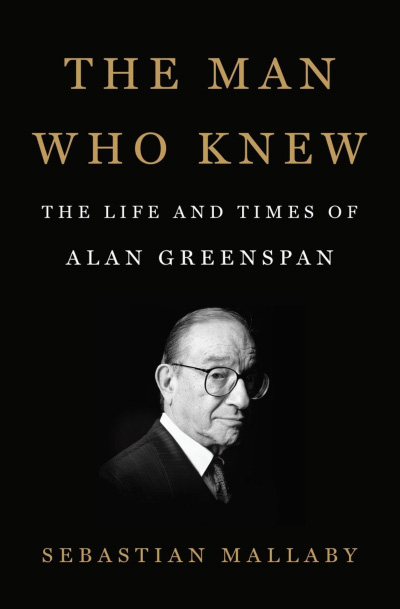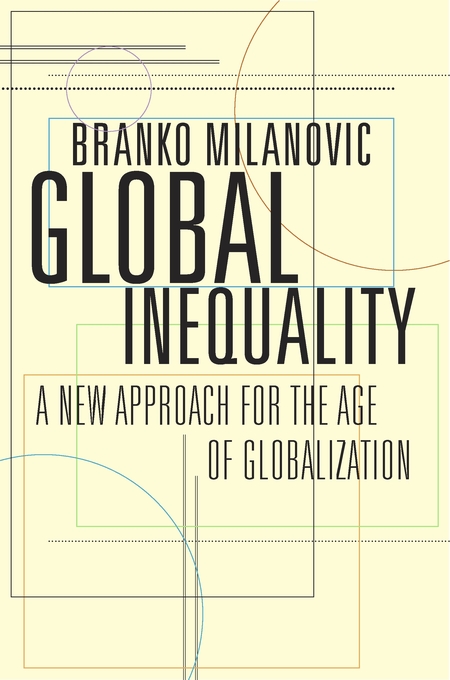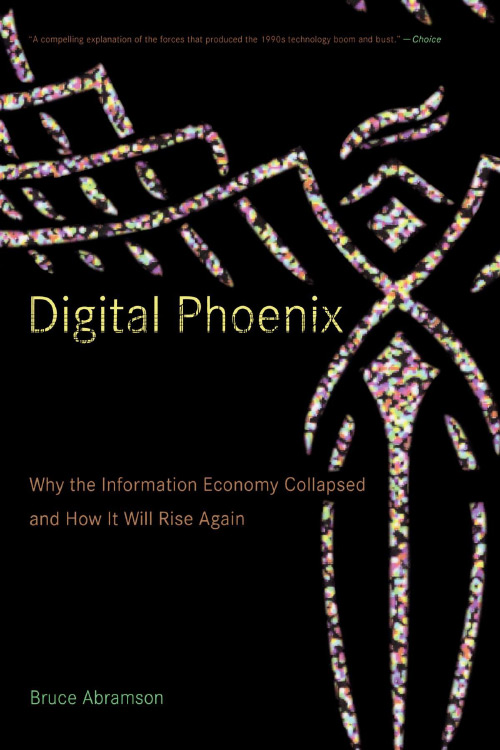Arthur Diamond provides a narrative of human progress through “creative destruction.” That expression is from Joseph Schumpeter’s Capitalism, Socialism, and Democracy (New York: Harper and Row, 1942), although Diamond more frequently uses the related term, “innovative dynamism.” The latter term is more benign. Schumpeter’s phrase might imply that invention and innovation are a zero-sum game. However, Diamond takes great pains to affirm that what Schumpeter labels creative destruction is not a zero-sum game. Citizens, consumers, competitors, and most notably, workers are net winners with innovative dynamism.
The book is a rich collection of stories for a wide range of readers. Those might include economic historians as well as humanistic historians. I recommend Diamond’s book for policy analysts, judicial clerks, business strategists, management consultants, and financial analysts who will find the discourse useful, perhaps even profitable. The same might apply to investment bankers and antitrust lawyers who wish to document the putative efficiency gains to horizontal or vertical mergers. Business journalists and other media personnel will find Openness to Creative Destruction enlightening, informative, and even charming.
Diamond asserts that creative destruction is not inevitable. Rather, creative destruction is the consequence of culture, institutions, policies, and human imagination. There have been periods of great invention and innovation and corresponding advances in human well-being, but stagnation has been more common. Despite this fact, many North American observers think that the innovative process is now inevitable. Diamond demonstrates his case with frequent portraits of entrepreneurs in unusually wide-ranging domains—agriculture, mining, manufacturing from automobiles to clothing, from food supplies to antibiotics—providing memorable accounts of what we often label Schumpeterian competition. Moreover, Diamond traces new products and process in times of both modest innovation and intense innovation. This history affirms the non-inevitability of innovative dynamism.
The book provides taxonomies that can be useful for understanding the complexities of creative destruction. For example, Diamond distinguishes free-agent entrepreneurs from innovative entrepreneurs. The former do things, as their own bosses, that have been done before, while the latter create new goods or new processes. While celebrating new goods and new processes, we might presume that they are more important, but in a Hayekian perspective, Diamond notes that some jobs still involve tinkering. Farmers tinker with tractors to make them self-driving. Surgeons repair and customize their tools, making them more useful for the surgical procedures.
In a related vein, Diamond distinguishes between formal knowledge and informal knowledge by recognizing the importance of both approaches to innovative dynamism. Formally trained scientists contribute much to the success of entrepreneurs, while revolutionary breakthroughs are more commonly attributable to advances in informal knowledge. On a related point, Diamond observes that the high fraction of successful entrepreneurs who are dyslexics attest that innovating entrepreneurs are often outside the main stream of conventional thinkers.
Another category in the innovation domain is the recurrent phenomenon known as the “Leap Frogging Process.” Leapfrog is the game in which children leap over each other’s backs to become the lead frog. In the commercial world, new entrants or existing firms develop new products or processes to capture new customers. Lighting is an example. Electric lights replaced dimmer gas lights and led to greater safety. Diamond cites impressive data from William Nordhaus showing tremendous decreases in the price of a lumen-hour of light, as one form of lighting leapt over another. Similar events happened with computer printers in the 1980s and 1990s. In the case of aircraft, jet airplanes leapfrogged over propeller planes. With leapfrog competition, firms compete by bringing new goods and new processes to the market. This is often a disruptive process. In this domain, firms evolve in hard-to-predict ways. Closely related is the notion that big incumbent firms are likely to fail, as in the case of Baldwin Locomotive, a well-managed dominant firm, where the firm failed to compete effectively with diesel locomotives. Leapfrogging demonstrates inherent discontinuities in invention, discovery, and commercialization.
Another noteworthy taxonomy in Diamond’s book, borrowed from William Baumol, is the distinction between productive, unproductive, and destructive entrepreneurial activity—which Diamond documents well. Economies tend to prosper where productive entrepreneurship is rewarded and both culture and public policies eschew unproductive and destructive entrepreneurship.
Diamond asserts with prominent economists such as Alfred Marshall that there is a life cycle to firms, and big incumbent firms often find it hard to change and adapt. Kodak, which continued to focus on film cameras even though the firm invented the digital camera, is a telling example. Kodak went bankrupt.
Three persistent themes pervade Diamond’s book. The first theme is that innovative dynamism is ubiquitous. Diamond identifies a vast number of characters who identified ideas, mechanisms, chemistries, art forms, technologies, procedures, and engineering designs that led to advances in human well-being for consumers, investors, and workers. He augments the robust scientific narrative with a substantial array of biographical accounts that affirm human progress, imagination, and hope. Diamond’s biographical accounts provide personal and warm affirmation of the Schumpeterian legacy. People exhibit remarkable ingenuity in the practice of creative destruction. Examples include Walt Disney, who embodied an entrepreneurial side of the humanities. The animation and theme parks are a product category that revolutionized middle-class consumers for multiple decades. Disney illustrates imagination nearly beyond belief. In a noteworthy contrast, John D. Rockefeller refined crude oil to make kerosene. With deliberate focus on cost reduction and production innovation, Rockefeller expanded via merger and reduced costs. The price of kerosene declined.
George Stephenson developed the steam locomotive and made major improvements in railroads. Stephenson examined steam engines and implemented improvements in the engines and thereby improved locomotives. The method seemed to be “trial and error,” a unifying theme for Disney, Rockefeller, and Stephenson. More to the point, it seems inconceivable to have more diverse innovators than these three superb practitioners in radically different domains. They are a small fraction of entrepreneurs in Diamond’s book.
Consider the example of George and Jack Hartford at A & P. This famous grocery retailer in bygone years is a counterexample to Alfred Marshall’s life cycle of a firm. A & P “reinvented itself” four times—creating the first chain of grocery stores in the 1890s, becoming an “economy store” with lower costs, prices, and efficiency in 1912, vertically integrating via acquiring suppliers and thus generating additional efficiency in 1926, and enhancing self-service grocery marketing, also leading to enhanced efficiency.
Diamond provides another example of stunning imagination and execution in the case of Orville and Wilbur Wright, who developed the airplane. There was a good deal of trial and error for the former designers and makers of bicycles. The number of detractors and prophets of failure was immeasurable. Nevertheless, the brothers persisted in the face of danger and brought a revolutionary product to their cohorts and later generations.
Cyrus Field laid the first telegraph across the Atlantic Ocean. Field moved from the wholesale paper business to the business of laying a telegraph on the ocean floor to bring Europe and America together and to bring diverse people together.
MacLean Trucking founded by Malcolm MacLean standardized box sizes to lower the cost of transshipping freight between localities via railroad, container ship, and truck. MacLean successfully standardized “the box,” the transoceanic and railroad container that generated great savings to shippers and railroads. The benefits to the world’s population are hard to imagine but are distinctly evident as we observe freight trains or shippers in various coastal ports.
Diamond labels Steve Jobs as “one of the great innovative entrepreneurs of our—or any—time.” Additionally, Diamond ascribes nearly incomparable intuition to Jobs. Diamond builds his case with several telling accounts, so his assertion is hard to refute.
More generally, reading Diamond’s book with its fast examples of new goods is an investment in knowledge of the details of prosperity. For the casual reader, the flurry of examples might prove overwhelming, but for the scholar, the details of prosperity can be therapeutic. Either way, Diamond’s narrative is unmistakably joyful.
The second major theme is that innovative dynamism in the statistical sense is unidentified. Imagine there is a good measure of innovative dynamism in the economy. There may be some measurement error, but the percentage of GDP in the economy that represents new goods would be an example. A large statistical difficulty is that many factors cause new goods. There is considerable ambiguity of cause and effect of new goods and the assertion applies as well (if not more) to innovative processes, which may be even more difficult to identify.
Scientific discoveries such as fixing nitrogen from the air or the mundane act of hand washing in the laboratory or surgical room, or even more effective food processing are remarkably difficult to predict. In short, with multiple factors that cause new processes and new goods and the common practice of trial and error, it is an imposing task to forecast what is coming next.
One example is that different cultures cause innovative dynamism. Diamond provides numerous examples of the cultural impact on innovation in chapter 8. Further complications add to the inherent ambiguity. For example, past inventions and innovations, especially the recent-past innovative dynamism, cause future innovative dynamism, especially with complementary new goods such as roads and automobiles.
A similar dimension is that public policy affects innovative dynamism. Patent policy in the past has worked well. Diamond argues, however, that in recent decades the administration of patent policy has retarded innovative dynamism. Antitrust policy also plays a potential role. More generally, innovative dynamism requires open access, and both policy and culture play a role in creating or retarding open access. Accordingly, policy such as Emperor Tiberius’s execution of the inventor of aluminum or Stalin’s purge of noncompliant inventors, scientists, or technicians are ipso facto not open access.
In a related vein, financing causes innovative dynamism, as exemplified by American Research and Development, the first American venture capital firm that has had many followers. Nevertheless, the required financing of new goods raises the issue of more complexity to innovative dynamism and underscores the complexity of cause and effect.
The case of regulation is more straightforward. While regulation can correct market failures, Diamond documents strong evidence that regulations have grown at alarming rates, impacting the domains of finance, labor, and health, with special mention of dysfunctional regulations for new pharmaceuticals as noted by Sam Peltzman’s well-cited research. Indeed it is not hard to imagine that deregulation of innovative dynamism would generate enormous benefits to broad segments of our communities.
The third big theme is that innovative dynamism is redemptive. Diamond cites Hobbes’s famous observation that life is “poor, nasty, brutish, and short” as a description of the era prior to the Industrial Revolution and McCloskey’s hockey stick metaphor that life became a lot better after roughly 1820 for those who lived in countries that, in Diamond’s parlance, achieved innovative dynamism via culture, business strategy, and public policy. Tools were primitive for millennia. Then, as Diamond notes, railroads replaced wagons, cars replaced horses, steamboats replaced sailing ships, radio replaced vaudeville, telephones replaced telegraph, air conditioners replaced fans, and electronic calculators replaced slide rule. These new goods did the same job for consumers but better than the old good.
Diamond points out there is no universal ranking of new goods. The economic ranking of utility (happiness) is not precisely measured. Nevertheless, he documents some noteworthy features of the post–Industrial Revolution world. Diamond cites Brad DeLong’s assertion that 45 percent of the value of what middle-class households in rich industrialized countries consumed at the advent of the third millennium was not invented or widely used at the end of the nineteenth century. Walking back to 1890, such a consumer would miss electricity—and attendant heating and cooling, and access to information, entertainment, broadcasts, computers, and the internet—and as Diamond poignantly indicates, the crippling of Franklin Roosevelt from polio prior to Jonas Salk’s polio vaccine. Diamond also notes that Nathan Meyer Rothschild, the richest man in the world, died of an abscessed infection that now can be cured via antibiotics available to the poorest patient. No antibiotics were available in the 1800s. Indeed the most evidently redemptive new goods are medicines. John D. Rockefeller lost a grandson to scarlet fever in 1901. Roughly, four decades later, scarlet fever declined dramatically due to new products, sulfa drugs, invented by the medical inventor Gerhard Domagk accompanied by Carl Duisberg. Scarlet fever mortality deceased between 52 and 65 percent from 1937 to 1943 due to the sulfa drug innovation.
Diamond also documents the redemptive side of electric lighting, which replaced candles that gave off smoke and led to fires as well as kerosene lamps that yielded more light but also greater fire risk. Electric lights substantially increased the welfare and convenience of the middle and working classes. Electricity lowered the price of air conditioning, which in turn increased productivity of factory workers and substantially lowered death rates.
Human freedom and choice are also expanded by innovations such as the printing press, the telephone, the internet, and the computer. The unknown inventor of the plough and Cyrus McCormick, the inventor of the reaper, dramatically increased agricultural production, in that they made living less expensive, as did Isaac Singer, the inventor of the sewing machine, who made clothing cheaper. In the agriculture case, Fritz Haber, the inventor, and Carl Bosch, the machine-creating entrepreneur, combined to extract nitrogen from the air to make fertilizer.
Time saving is a more subtle form of redemption. Innovative dynamism via faster and safer food processing, the advances accompanying the sewing machine, and the advent of the modern washing machine are remarkably more time efficient, especially for women, a fact that Diamond affirms.
The examples above focus on new goods and new process but they understate the redemptive role of innovative dynamism in two senses. First, Diamond, building on the idea of Tyler Cowen, asserts that the net effect of innovative dynamism expands the domains of human choice, which demonstrably leads to greater happiness. Second, there is the age-old Luddite critique that innovative dynamism leads to job losses and is thus a scourge on humanity. Diamond asserts that popular story is simply misinformed. He cites evidence showing that, while declines in employment are often highly visible and discrete events, increases in employment are by young, smaller firms and are continuous. On net, the Luddite contention is incorrect.
In short, Openness to Creative Destruction is an informative and enjoyable book. Its readers will be more informed regarding the details and mechanisms of prosperity.
| Other Independent Review articles by Seth Norton | |
| Fall 2005 | Democracy, Governance, and Economic Performance |

